By Freya Secrest
This sign appeared in my neighborhood recently. It immediately struck and resonated for me and I notice that whenever I go out riding now I turn my bike in the sign's direction just to pass by it again. In considering why, I see that I find the sign strengthening and uplifting; it connects me in a small but specific way to what I can do as one individual. It brings my individual actions into a wider community that is envisioning a quality of future that I too want to imagine for the world.
We live in a world shaped by imagination. My car was a thought that began as a twinkle in someone’s imagination for a different kind of transportation, a vehicle that could travel quickly and directly to a destination. My shower was someone’s imaginative idea to bring a waterfall indoors and warm it up. Air travel, for example, has been a glimmer in human imagination since Icarus tried to fly his father's wings, but not until the Wright brothers did we succeeded in giving flight a viable form for collective movement. There were many small steps, lots of trial and error, and many brave choices that lead to these new ideas becoming an accepted everyday reality. In seeing this in the long view, it is individual, step by step contributions that carried the possibility forward into today’s reality.
Imagining possibilities begins in our relationships with the world around us. From the balance of our known connections, we focus our curiosity and creativity and invite possibility. As we step toward these new possibilities, our relationship to what is known shifts, expands, grows. New forms emerge. What results needs a new set of organizing principles that recognize a new balance so that these imaginations can bloom and grow. As an example, before any new form of travel emerged, there was the imagination of a new relationship to distance and speed and our understanding of where we belong in the world. We did not need to be limited to where our clan lived, how far our own legs could carry us or the speed of a horse and buggy; we could move further and find shelter and connections far away from a familiar environment. Our predecessors imagined new technologies to help them travel through physical space more quickly and build relationships with new people and places. In so doing our center of balance moved from possibilities centered in place into those centered in ideas and human creativity.
Our world today is shaped by the relationships and possibilities imagined by those who came before us. Perhaps it was assumed that human connection and caring and a verdant earth could not be lost. But, given the social, environmental and political turbulence in the world today, I am brought to consider the need for an expanded imagination, one that makes a technology of wholeness the focus of its attention.
“Hate has no home here.” My neighbor's sign points me to a way that I can add my energy to widening an imagination of the world of the future. I want to imagine a future in which hate and fear do not isolate us from each other. Where my idea of “right” does not justify acts that separate and undermine others. I want to imagine a world where hospitality and respect are the foundation for connection, interaction and growth. Where my respect for the living earth gives it space to grow and nourish all its residents.
The sign brings me back to the small but valuable personal shifts in my own time and attention that are a necessary foundation for hospitality and respect. It helps me to bring weight and substance to my commitment to the future. It reminds me to embody my imagined world through deed as well as word.
This is a life-long project, not one that will necessarily be completed in my remaining time on earth. But it is one to which I am very committed to contribute. I greatly appreciate the family who posted that sign in their yard. Even though I do not know them, they remind me I am not alone. The steps I can take to bridge and connect are part of a wave that is transforming the world through imagination put into daily action.
The Lorian Blog will be taking a break until January, 2018. Thank you for your ongoing support.
Views from the Lorian Community publishes essays from a team of volunteer writers expressing individual experiences of a long term, committed practice of Incarnational Spirituality (and the general principles shaping such a practice.) Views expressed do not necessarily reflect the sentiments or thoughts of any other person in Lorian or of Lorian as a whole. If you would like to subscribe, please visit our website and click on Follow Our Blog Via Email. Or email the editor:drenag@lorian.org.



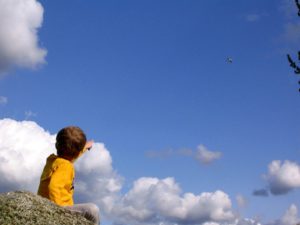



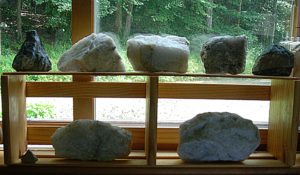
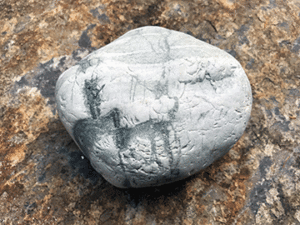 During my apprenticeship to a shaman, I learned how to journey into the non-ordinary reality of the lower, middle, and upper worlds where I met with power animals, nature spirits, deities, and all manner of beings for which I had no name. My first attempts were tentative yet soon enough I was surprised by some very real alternate realities. When going to the upper world for the first time, I expected to see ethereal castles and cloud cities. I thought I’d meet austerely other-worldly teachers. Instead, I wandered as though in a fog and began to worry that I would fail to see anything. Suddenly, I found myself in the presence of an old crone of a woman with wild hair and wilder eyes. I appeared to have startled her. She turned from something she was working on, took one look at me, and yelled in consternation “Go talk to
During my apprenticeship to a shaman, I learned how to journey into the non-ordinary reality of the lower, middle, and upper worlds where I met with power animals, nature spirits, deities, and all manner of beings for which I had no name. My first attempts were tentative yet soon enough I was surprised by some very real alternate realities. When going to the upper world for the first time, I expected to see ethereal castles and cloud cities. I thought I’d meet austerely other-worldly teachers. Instead, I wandered as though in a fog and began to worry that I would fail to see anything. Suddenly, I found myself in the presence of an old crone of a woman with wild hair and wilder eyes. I appeared to have startled her. She turned from something she was working on, took one look at me, and yelled in consternation “Go talk to  Here on Whidbey Island, I go for walks in a Buddhist nature reserve known as the Earth Sanctuary where they have created a standing-stone circle using slabs of Columbia Gorge basalt. I walk the circle, greeting each stone. Every time I perform this ritual, I am struck by a peculiar sensation when touching the stone slabs. I feel the exact opposite of grounded and immobile stability. I feel a watery current, a rushing and waving motion moving through dark space. Some of the standing stones convey this energetic feeling more strongly than others; with one, the sensation is quite strong ( the 11th in the circle proceeding clockwise). It reminds me of the flying sensation I experienced with the stone in Ireland. I can journey to stones at a distance, but the physical touching of stone is precious to me.
Here on Whidbey Island, I go for walks in a Buddhist nature reserve known as the Earth Sanctuary where they have created a standing-stone circle using slabs of Columbia Gorge basalt. I walk the circle, greeting each stone. Every time I perform this ritual, I am struck by a peculiar sensation when touching the stone slabs. I feel the exact opposite of grounded and immobile stability. I feel a watery current, a rushing and waving motion moving through dark space. Some of the standing stones convey this energetic feeling more strongly than others; with one, the sensation is quite strong ( the 11th in the circle proceeding clockwise). It reminds me of the flying sensation I experienced with the stone in Ireland. I can journey to stones at a distance, but the physical touching of stone is precious to me. It’s been years since I learned shamanic practices. Later, discovering incarnation spirituality, I realized a key difference between the two approaches to journeying or attunement. In shamanic journeying, I learned to leave the body behind. My consciousness departs the surrounding environment to enter a full-on trance state. Incarnational spirituality, with its joyous acknowledgement of embodiment, encourages me to involve my whole self. I retain awareness of my body and invite my environment to accompany me in fellowship. Thus, the touching of stones physically carries a powerful charge for me, as it works on a Gaian wavelength.
It’s been years since I learned shamanic practices. Later, discovering incarnation spirituality, I realized a key difference between the two approaches to journeying or attunement. In shamanic journeying, I learned to leave the body behind. My consciousness departs the surrounding environment to enter a full-on trance state. Incarnational spirituality, with its joyous acknowledgement of embodiment, encourages me to involve my whole self. I retain awareness of my body and invite my environment to accompany me in fellowship. Thus, the touching of stones physically carries a powerful charge for me, as it works on a Gaian wavelength.







 We Americans have just passed through "The Great American Eclipse”. It was a dramatic name for a dramatic event. Like most of the country, I waited eagerly for 10:20 AM to arrive in Seattle. It was awe-inspiring.
We Americans have just passed through "The Great American Eclipse”. It was a dramatic name for a dramatic event. Like most of the country, I waited eagerly for 10:20 AM to arrive in Seattle. It was awe-inspiring. The shadow of the moon imposed an unusual darkness during the daylight, a darkness that unexpectedly brought things up to be examined. As we enter times of darkness when things go bump in the night, we may find ourselves confronting those things which hide inside us from the light of day. They may sneak up on us, taking us by surprise as I was, or they may erupt suddenly and forcefully. For me, this grief for my world in the grip of so much violence has always been there, but I manage to keep it under the bed so that I can function in my day. The eclipse and Frank Reynolds brought it back into the light of my consciousness.
The shadow of the moon imposed an unusual darkness during the daylight, a darkness that unexpectedly brought things up to be examined. As we enter times of darkness when things go bump in the night, we may find ourselves confronting those things which hide inside us from the light of day. They may sneak up on us, taking us by surprise as I was, or they may erupt suddenly and forcefully. For me, this grief for my world in the grip of so much violence has always been there, but I manage to keep it under the bed so that I can function in my day. The eclipse and Frank Reynolds brought it back into the light of my consciousness. There's still time to join Julie Spangler for
There's still time to join Julie Spangler for  I have had a meditation and spiritual practice for almost 40 years. Mostly it’s been a private thing, central to my sense of self and informing my activities in the outer world, but never overt. In many ways, my experiences of the “inner” and “outer” worlds had felt like very different, if not opposing forces in my life. Two summers ago, I was ordained as Lorian Priest. I saw ordination as a way to reconcile these worlds.
I have had a meditation and spiritual practice for almost 40 years. Mostly it’s been a private thing, central to my sense of self and informing my activities in the outer world, but never overt. In many ways, my experiences of the “inner” and “outer” worlds had felt like very different, if not opposing forces in my life. Two summers ago, I was ordained as Lorian Priest. I saw ordination as a way to reconcile these worlds. I studied General Systems Theory in college as part of learning about the relationship between conflict and cooperation. One of the most useful things I learned from it, something that helped me immensely as a mediator, was that conflict and cooperation are partners in the movement towards wholeness. It describes the transitional zone between chaos and order as a place of great power and sensitivity, where the least influence can have enormous impact and result in a domino effect for good or ill. The influence that helps a system in flux settle into a new pattern is known as a “strange attractor” or seed crystal. A seed crystal is an anchor, precipitating change in a system wavering between outcomes. The quality of that little crystal can determine the quality of the outcome.
I studied General Systems Theory in college as part of learning about the relationship between conflict and cooperation. One of the most useful things I learned from it, something that helped me immensely as a mediator, was that conflict and cooperation are partners in the movement towards wholeness. It describes the transitional zone between chaos and order as a place of great power and sensitivity, where the least influence can have enormous impact and result in a domino effect for good or ill. The influence that helps a system in flux settle into a new pattern is known as a “strange attractor” or seed crystal. A seed crystal is an anchor, precipitating change in a system wavering between outcomes. The quality of that little crystal can determine the quality of the outcome.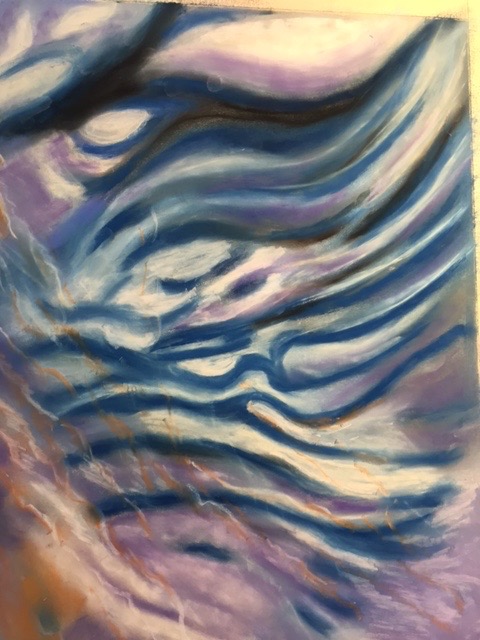
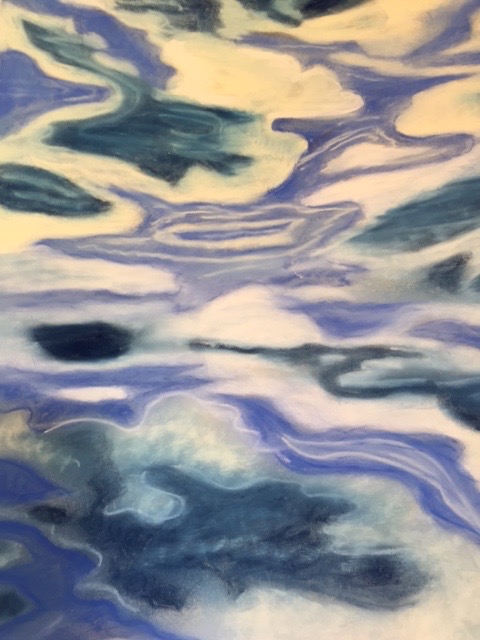
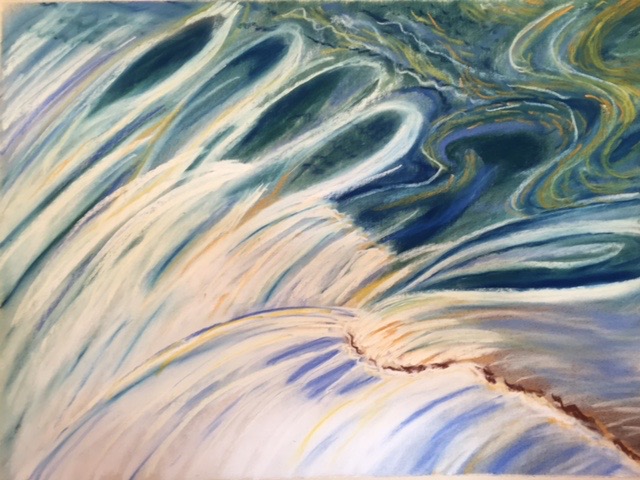
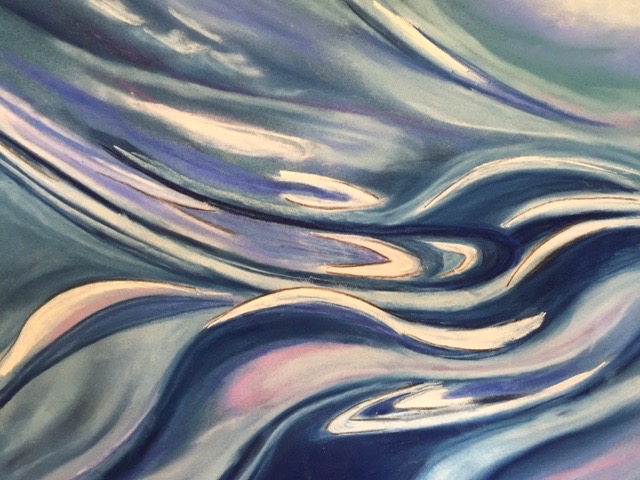

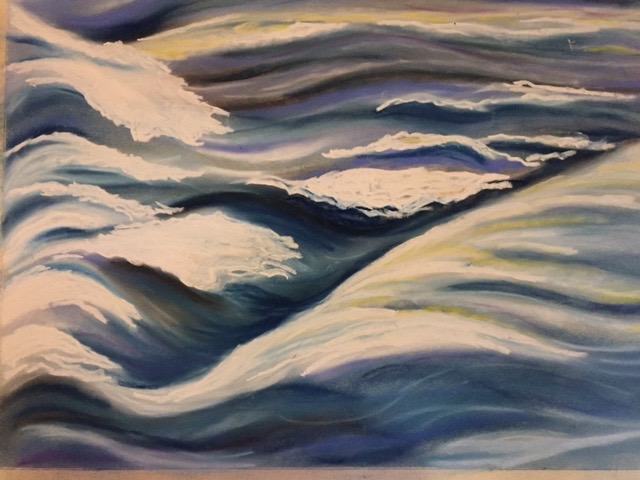
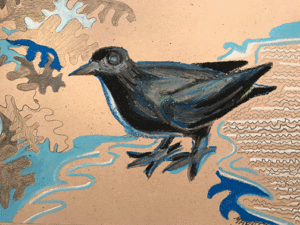
 e subject of “collaborative fields” came up recently in a conversation I had with Mary Inglis, one of our
e subject of “collaborative fields” came up recently in a conversation I had with Mary Inglis, one of our 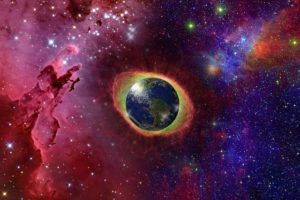 In 1979, the British scientist James Lovelock published a book Gaia: A New Look at Life on Earth. In it, he presented evidence that through the auto-regulatory systems of the biosphere, the Earth acted as a living organism. On the suggestion of this friend, the author William Golding, he proposed to call this organism by the Greek name for the goddess of the earth and the mother of all life, Gaia. This was the beginning of what was called the “Gaia Hypothesis,” co-formulated by Lovelock and the American microbiologist, Dr. Lyn Margulis. Although initially met with skepticism by their scientific colleagues, further research generated enough evidence in support of this hypothesis that it became accepted and graduated to becoming the “Gaia Theory.”
In 1979, the British scientist James Lovelock published a book Gaia: A New Look at Life on Earth. In it, he presented evidence that through the auto-regulatory systems of the biosphere, the Earth acted as a living organism. On the suggestion of this friend, the author William Golding, he proposed to call this organism by the Greek name for the goddess of the earth and the mother of all life, Gaia. This was the beginning of what was called the “Gaia Hypothesis,” co-formulated by Lovelock and the American microbiologist, Dr. Lyn Margulis. Although initially met with skepticism by their scientific colleagues, further research generated enough evidence in support of this hypothesis that it became accepted and graduated to becoming the “Gaia Theory.” On a lovely spring day in the early days of the Findhorn community in Northern Scotland, sometime around 1970, a visitor handy in the ways of the bulldozer was helping clear the land for the construction of the community's new building to house their printing endeavors. It was an innocent enough task as these things go, but as this earth moving was taking place, Peter Caddy, founder of Findhorn, received an emergency phone call. On the other end of the line was his friend and colleague Ogilvy Crombe — ROC to his friends — calling from Edinburgh where he lived. "What are you doing?!?" he asked in his soft Scottish accent. "I have an apartment full of angry nature spirits carrying suitcases saying they are leaving your community. They say that you have broken your promises of cooperation."
On a lovely spring day in the early days of the Findhorn community in Northern Scotland, sometime around 1970, a visitor handy in the ways of the bulldozer was helping clear the land for the construction of the community's new building to house their printing endeavors. It was an innocent enough task as these things go, but as this earth moving was taking place, Peter Caddy, founder of Findhorn, received an emergency phone call. On the other end of the line was his friend and colleague Ogilvy Crombe — ROC to his friends — calling from Edinburgh where he lived. "What are you doing?!?" he asked in his soft Scottish accent. "I have an apartment full of angry nature spirits carrying suitcases saying they are leaving your community. They say that you have broken your promises of cooperation."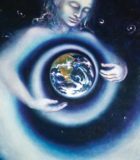
 As we prepare for Lorian’s summer conference, many of us are exploring our relationship with Gaia, how to “think like a planet,” and what it means to be a loving and conscious member of the web of life that is our earth. David Spangler describes relating to Gaia as more than viewing the planet as a living organism. It’s about “a more holistic, ecological, systems-oriented way of viewing reality, seeing things in terms of interconnections, patterns, networks, relationships, integration, and interacting wholes rather than as collection of discrete but separate entities.”
As we prepare for Lorian’s summer conference, many of us are exploring our relationship with Gaia, how to “think like a planet,” and what it means to be a loving and conscious member of the web of life that is our earth. David Spangler describes relating to Gaia as more than viewing the planet as a living organism. It’s about “a more holistic, ecological, systems-oriented way of viewing reality, seeing things in terms of interconnections, patterns, networks, relationships, integration, and interacting wholes rather than as collection of discrete but separate entities.”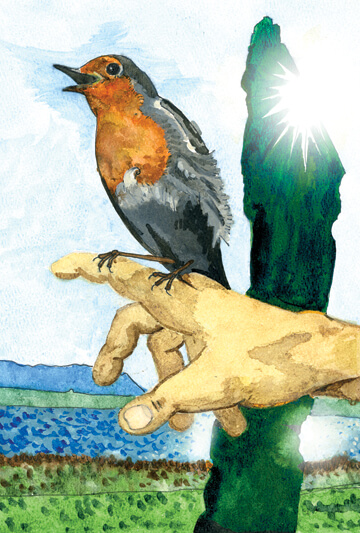 When I used the term Gaianeering to describe the
When I used the term Gaianeering to describe the